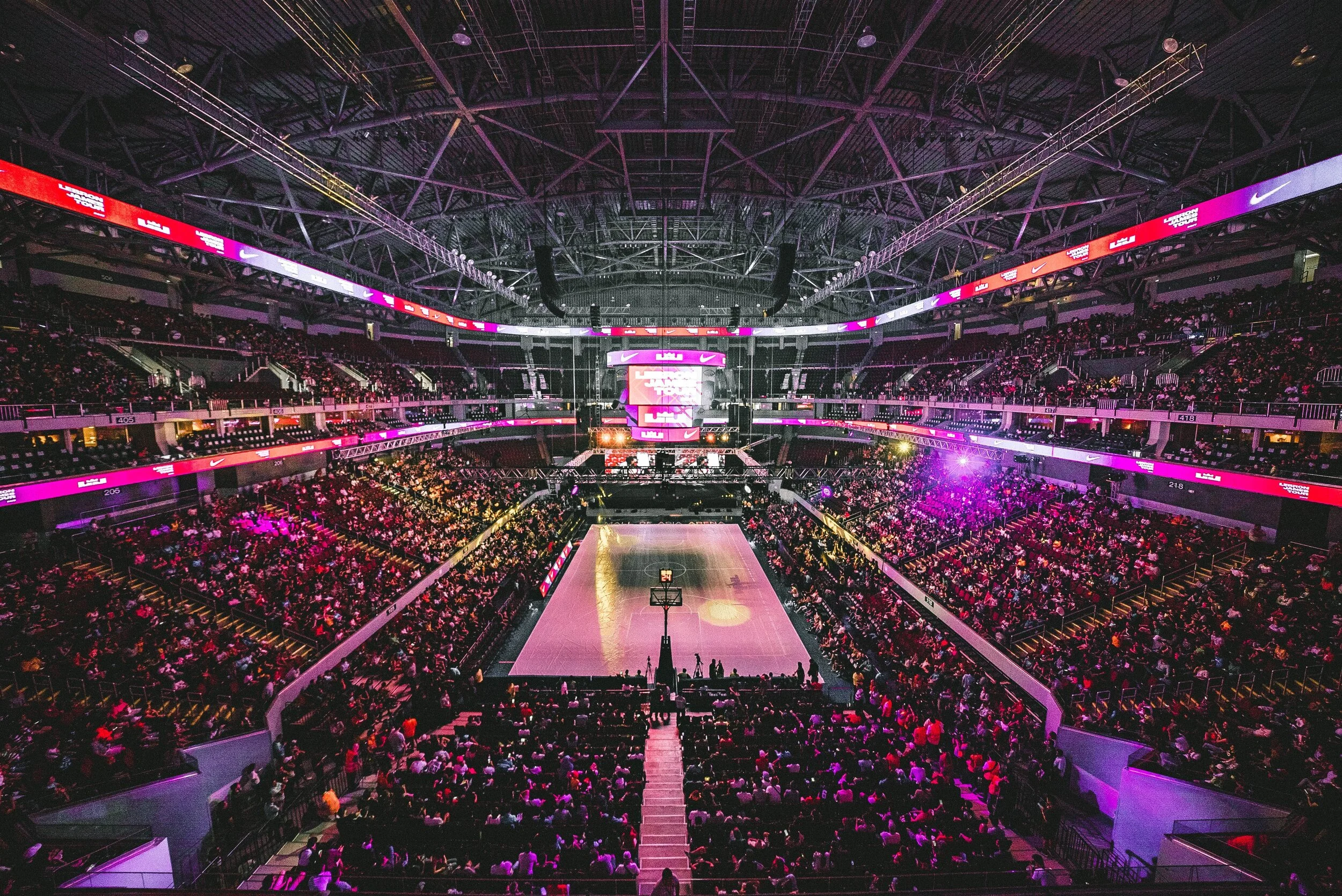The Grammys and the Psychology of Influence and Authority
Photo by Israel Palacio, Unsplash
In 1964, Bob Dylan blessed the music world with the classic The Times They Are A-Changin’. Despite belonging to the Boomer generation, his message remains youthful: The only constant is change.
This is especially true of the music industry, though it isn’t just the music itself which continues to change but also the way we talk about it. Before Spotify’s serendipitous and algorithmic creation of Discover Weekly, we heard the newest hits first from listening to the radio or watching MTV, while Americans tuned into the Grammy Awards every year to see the best artists recognized for their outstanding achievements.
But even the Grammys times are a-changin’.
Despite standing as one of four major annual American entertainment award ceremonies, the Grammys has struggled to keep its viewership engaged since its rapid decline from 39 million viewers in 2012 to 28 million the year after, and now at the lowest since 2009 at 18 million viewers.
To understand this decline and why a Grammy nomination/award might be losing its prestige, let’s dive deep into the science of persuasion.
The Shift in the Power of Authority on Persuasion
Whether it’s a friend’s recommendation, an ad, or a brand’s social media feed trying to convince you to buy a product, travel or eat somewhere new, behavioral science has found that persuasion comes in many ways.
One of the most potent persuasion techniques is the principle of authority. We’re much more likely to be persuaded by someone we view as an authority figure in a particular field of work. We trust dentists, lawyers, engineers to fill our cavities, fight our legal battles, and construct our buildings because their hard-earned degrees from medical, law, and engineering school tell us they know more and better than us—without question.
We’re also more likely to believe in information approved/verified by someone or an entity we perceive as an expert in a specific domain. For instance, if a sommelier has carefully curated different wines from different origins to pair with our tasting menu, we just know it’s going to be an unforgettable meal from the get-go. We feel we’re in great hands when we know deliberate thought, along with knowledge, experience, and authority, was put into the products, services, and experiences we pay for.
Authority, being the key ingredient in deciding who belongs to the top talent group in the music industry, is one of the major reasons why the Grammys had such an appeal. The Academy’s authority was cemented by their exclusive grasp on conversations about music taste and trends. They were a central, esteemed, and trusted communication channel dedicated to publishing insights on music.
As communication about music changed, so too their sense of authority and influence. This change in authority is palpable with the American Music Awards (AMAs) for example. Unlike the Grammys where only the Academy has full control of both nominees and winners, the AMAs are based only on fan-votes. In 2019, American singer and songwriter Halsey was snubbed by the Grammys despite her song Without Me’s chart-topping success. While grateful for the opportunity, she especially thanked the AMAs for giving listeners a place to vote for rising artists like herself.
As communication broadens, the more power shifts away from the Academy. If not them, then where does it shift to? To us. The people. The fans. And here’s where the next persuasion technique comes in.
The Power of Popularity and Social Proof on Persuasion
Social influence is another potent form of persuasion. It’s very much to blame if you’ve ever caught yourself yawning when your friend sitting across from you does or reaching to check your phone after catching a glimpse of someone doing the same. As social creatures, we can’t help but be influenced by the actions, attitudes, and beliefs of others.
This goes as far as even mimicking online behaviors. We’re more likely to be persuaded to share a heart-wrenching Humans of New York post, like a funny meme, or cancel celebrities if people from our social circles already did.
We’re also more likely to be persuaded to do something if it looks like a popular choice. This is a specific type of social influence known as social proof. It’s why we feel more confident in a decision knowing a lot of people made the exact same choice. After all, how can 1,000 other people be wrong?
Social networks have driven the power of social proof through the roof. Let’s take Yelp reviews as an example. When we look for a new restaurant, we’re automatically drawn to the ones rated highest. When we go on Amazon, we naturally think more highly of products with the most positive reviews. Since ratings are solely based on the cumulative experiences, thoughts, and feelings of strangers, this perceived popularity has a massive impact on our consumer behavior. This impact is all thanks to social proof.
Social influence is fundamentally different than the appeal to authority. Instead of influence concentrated in a single, perceived food expert like the Michelin star rating system, social proofing spreads influence to the hundreds of people leaving their personal reviews. The power is in the numbers, not in a single authority.
And this is exactly how it played out for the Grammys.
What’s happening to the Grammys is not just the decline in viewership, but the decline in the authority of the Academy. The Grammys was the central authority—a major influence and source for how people viewed artists and producers. When we tuned in, it was the Academy telling us what was the best music out there every year. Now, with social media and fan-based awards, we can openly express our opinions and sentiments about music online, forcing brands to shift the way we perceive their authorities.
How Brand Communication Influences Consumer Behavior
The Grammys’ decline provides a window into the shift towards decentralized, social proof-based influence. This shift isn’t limited to the music industry. It’s a widespread trend, shaping modern brand communication.
At first, brand communication was an easy one-way street between brand and consumer. Companies bought billboard ads, newspaper ads or commercial slots on the only three channels America had. We watched the Grammys at home and couldn’t share our opinions if we disagreed with the winners. The days then were much easier for brands because their only jobs were two-fold: to tell us what they wanted us to say/think about them, and have their ads be seen by as many people as possible.
It wasn’t until Web 2.0 changed everything. It built the road for two-way communication between brand and consumer and laid the foundation for social media, where people could talk about their favorite products, people, and places. Now, we not only interact with the brands directly but those who like the same things we do too.
Big companies like Nike and smaller companies like Glossier have both embraced this open communication channel, whether it’s by investing more on their social media strategies, developing a Nike Running Club app to sustain a tribe-like following, or sponsoring influencers. A 2018 Google consumer insights report found that YouTube users were three times more likely to watch YouTube tutorial videos instead of reading the product’s instructions and from 2016 to 2018, there were 50,000+ years worth of product reviews watched on mobile alone. Open social channels such as YouTube’s product videos have driven boring instruction manuals obsolete.
While many brands have adapted, the Grammys—at least so far—have still fallen short. Open communication seems to have broken down its credibility, resulting in declining viewership, hate comments, and constant criticism of the awards.
What’s next for the Grammys and the music industry? It’s anyone’s guess. But if we were to ask Bob Dylan, he’d remind us that the only constant is change. The times they are a-changin’, Academy!



What’s Next?
References
Forbes: The Grammy Bounce: How Much Is An Award Really Worth?, Zac O’Malley Greenburg
Hubspot Blog: 51 YouTube Stats Every Video Marketer Should Know in 2019, Clifford Chi
Nielsen Media Research: Grammy Awards TV Ratings 2010
Quartz: The magic that makes Spotify’s Discover Weekly playlists so damn good, Adam Pasick
Statista: Number of Grammy Awards viewers from 2000 to 2019, Amy Watson
Twitter: American Music Awards, Halsey - “Without Me’ - Wins favorite song pop/rock, AMAs 2019































Dive into the fascinating intersection of psychology and marketing and how to use psychological biases in marketing strategy.